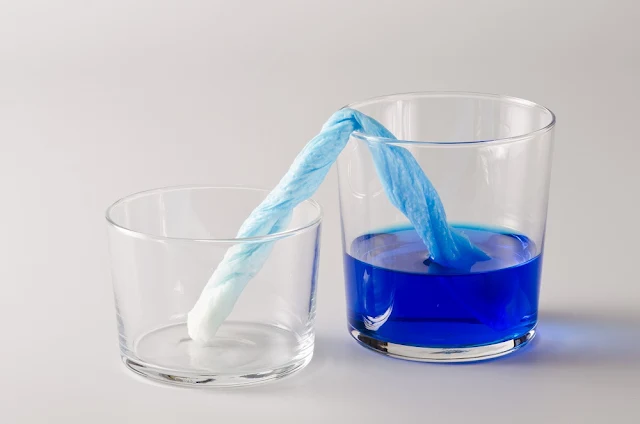Decoding the Science of Sweat-Wicking Fabrics

Sweat wicking is an important phenomenon for a sports wear fabric. Sweat wicking facilitates following functionality in a sports wear.
-
Comfort: Sweat-wicking fabrics keep the skin dry, reducing discomfort and preventing chafing during physical activities.
-
Temperature Regulation: Efficient moisture evaporation cools the body, preventing overheating during workouts.
-
Quick Drying: Rapid drying post-workout prevents prolonged discomfort and minimizes the risk of feeling chilled.
-
Reduced Friction: Minimizes friction between the fabric and skin, preventing chafing and potential injuries.
-
Odor Control: Inhibits bacterial growth by keeping moisture at bay, reducing unpleasant odors in sportswear.
Sweat-wicking fabrics operate through capillary action, where liquid, in this case, sweat, defies gravity and moves upward in narrow spaces. This phenomenon is possible because water molecules both adhere to the fabric's surface (adhesion) and cohere to each other, creating a capillary effect. The fabric's structure, with microscopic channels or spaces, promotes this upward movement of moisture. As a result, sweat is drawn into the fabric, transported to the outer surface, and efficiently evaporates, ensuring a dry and comfortable experience during physical activities.
Water and Wicking
Polarity in water arises from the uneven distribution of electrons, leading to a molecule with a positively charged side (hydrogen) and a negatively charged side (oxygen). This polarity results in strong attractive forces between water molecules, known as cohesion. In capillary action, water molecules adhere to a surface (adhesion) and cohere to each other, creating a chain-like effect. This dual interaction allows water to move upward against gravity in narrow spaces
So let's look at various aspects in designing a sweat wicking fabric
Hydrophilic / Hydrophobic
Understanding moisture regain values is crucial in selecting workout fabrics. A hydrophilic fiber with high affinity will prevent moisture from wicking. But purely hydrophobic fibers that repel water won’t work either. In order for capillary action to occur, there must be some attraction to water—just not too much.
Cotton's hydrophilic nature, with a moisture regain value exceeding 8.5%, contrasts with polyester's hydrophobic excellence, boasting a minimal 0.4%. The hydrophilic-hydrophobic balance determines a fabric's efficacy in wicking away sweat.
Polyester, being petroleum-based, can be chemically treated for hydrophilicity, while nylon, with polar amide units, strikes a balance between hydrophilic and hydrophobic properties giving the best wicking performance. Spandex, in conjunction with nylon or polyester, introduces stretch without compromising moisture-wicking abilities.
Wool, specifically merino wool with a hydrophilic interior and hydrophobic exterior due to lanolin, boast excellent moisture management, making them a noteworthy addition to high-performance sportswear.
Fiber shape
Circular cross-sections limit moisture-wicking capabilities, whereas non-circular shapes, creating micropores, facilitate capillary action. This engineering feat ensures efficient moisture transport to the fabric's outer surface, where it can evaporate.
Microfibers
The fine and densely packed fibers create a large surface area, enhancing capillary action. This allows the material to efficiently pull moisture away from the skin and towards the fabric's surface. Additionally, the small spaces between microfibers provide channels for rapid moisture transport. The capillary effect in microfiber not only promotes quick absorption but also facilitates swift evaporation, ensuring effective moisture management in sportswear.
Testing fabric performance
Various tests, including vertical, horizontal, and transverse wicking assessments, are conducted to measure how efficiently a fabric transports moisture. In the vertical wicking test, fabric strips are suspended in water, and the one that allows the fastest water travel indicates superior wicking ability. The horizontal wicking test measures how far a predetermined water amount spreads on the fabric, determining its horizontal wicking efficiency. The transverse wicking test mimics the moisture-wicking garment's intended function, evaluating the rate of moisture spread through the fabric and along its surface.
Innovate with Kamlatech
Try our free Textile Tools